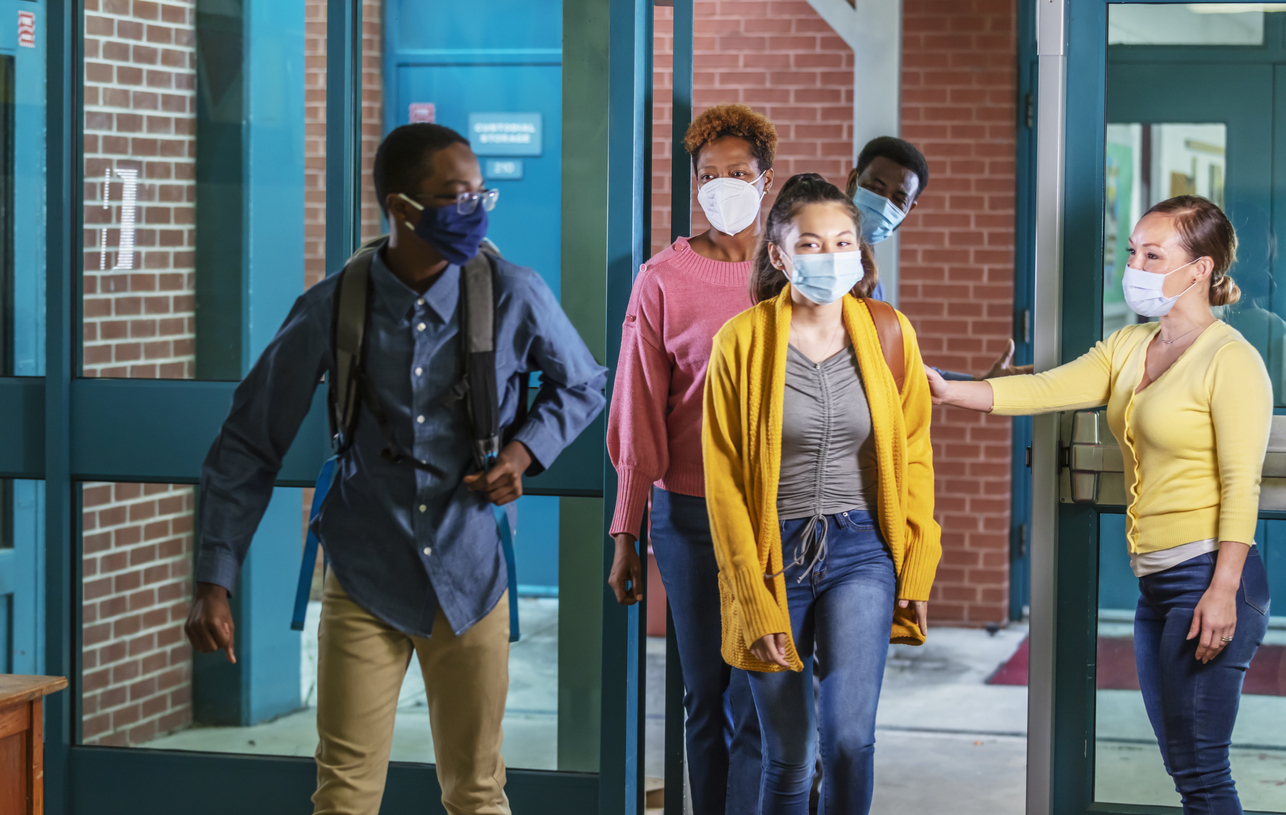Communication promotes learning


At the end of the semester, my students completed a survey about their experiences in my high school math classroom. I wanted to understand what worked and what did not in an effort to become a better teacher. As I read their responses and reflected on this school year full of changes, four lessons resonated with me about the culture of teaching and learning during a pandemic and beyond.
One of the questions on the survey was, “What is your favorite memory from math class?” Overwhelmingly, the students wrote about our circle time. This is a segment of class that we engaged in almost every day at the beginning of the period. I would pose a question that had nothing to do with math. I called each student’s name individually and every student had the option to answer or to pass.
Before the pandemic, I engaged in circle time with students only once per week. Yet during the 2020-2021 school year, I found that we all needed this chance to connect more often. My students agreed. One student wrote, “I love all of the circle time discussions we had. As an introvert, I was really happy to talk to people without all the pressure.” Another student explained, “I like how in the beginning of class we talk about what’s going on in our lives or how we feel.” A depiction from an additional student included, “My favorite memory was having circle time and getting to share things with you and my classmates.”
Lesson #1: Now more than ever students need to feel connected to themselves, to each other, and to their teachers. Circle time took at least 10 minutes each day, but, in the end, it was vital to ensuring that students felt a sense of belonging in our classroom.
One of the reasons for the need for connection was that teaching during the pandemic was full of policies that promoted separation. Virtual and hybrid learning meant that students were physically separate in their own homes. Even when we returned to in-person learning, students were separated by mask wearing, social distancing, and strict seating charts. All of these policies were meant to keep us safe and healthy, but separation can limit communication.
Students need opportunities to talk about their learning. Students grow by justifying their reasoning and critiquing the thinking of others. They learn by listening to their peers during small group work and whole class discussions. They develop understanding by analyzing, comparing, and contrasting ideas. Knowing these principles, I was intentional about students having chances to communicate about math.
Lesson #2: Communication cultivates learning. We must overcome barriers to communication by allowing students to have time to think privately, providing students opportunities to work in small groups where they may feel more comfortable talking, and asking students open-ended questions such as what do you notice or wonder and what do you agree or disagree with and why.
Connection and communication help to build bridges in teacher/student relationships. I remember when one of my students, Kayla, appeared at my classroom door in tears midway through the spring semester. She admitted to feeling lonely and depressed. She had reached her breaking point. I reminded her of how loved and valuable she was as I listened to her share her most personal feelings before accompanying her to meet with a school counselor. It’s a conversation not unlike many conversations that teachers have with students all the time.
Lesson #3: The relationships that teachers and students develop impact students’ abilities to learn and thrive. Kayla and so many of my students feel comfortable talking to me about life’s twists and turns. That comfort level impacts students’ learning. In the end-of-the-semester survey, students shared this very connection between teacher/student relationships and learning. One student wrote, “You have a great personality, and it helps keep us ready for learning.” Another student encouraged, “Continue being really nice and personal with students. It helps the learning when you feel like the teacher knows you.” An inspirational thought from a different student included, “Continue being so warm and friendly.”
Connection and communication lead to positive teacher/student relationships that have a tremendous impact learning. But how do we get there? How can we be intentional about building positive, lasting relationships that make a difference?
Lesson #4: Students learn from teachers who show that they care about them and want to see them be successful. There are so many uncomplicated, effective ways to build positive relationships with students: being committed to learning and using the correct pronunciation of students’ names, consistent warm greetings at the classroom door, prompt responses to emails, patience and flexibility in the learning process, and simply looking students in the eyes, listening intently, as they talk.
Teaching and learning during the pandemic has been full of some inevitable changes, but so many lessons about the culture of teaching and learning remain as significant ideals that we should continue to elevate in classrooms. Students need connection, communication promotes learning, relationships matter, and students learn from teachers who truly care.
—
Dr. Cicely Woodard is an experienced teacher leader who has taught secondary mathematics since 2003. She has spent most of her career teaching in middle schools in Tennessee. Currently, her passion for students learning math content through relevant, real-world contexts is evident in her classroom in Springfield, Missouri where she teaches high school mathematics. She is a 2017 Presidential Award for Excellence in Mathematics and Science Teaching Awardee, the 2018 Tennessee State Teacher of the Year, and a 2019 recipient of the Horace Mann Award for Teaching Excellence. In 2019, she also earned the NEA Foundation’s top honor, the NEA Member Benefits Award for Teaching Excellence. Dr. Cicely Woodard earned a Bachelor of Science in Mathematics from the University of Memphis, a Master of Education Degree from Vanderbilt University, and a Doctor of Education Degree from Lipscomb University.